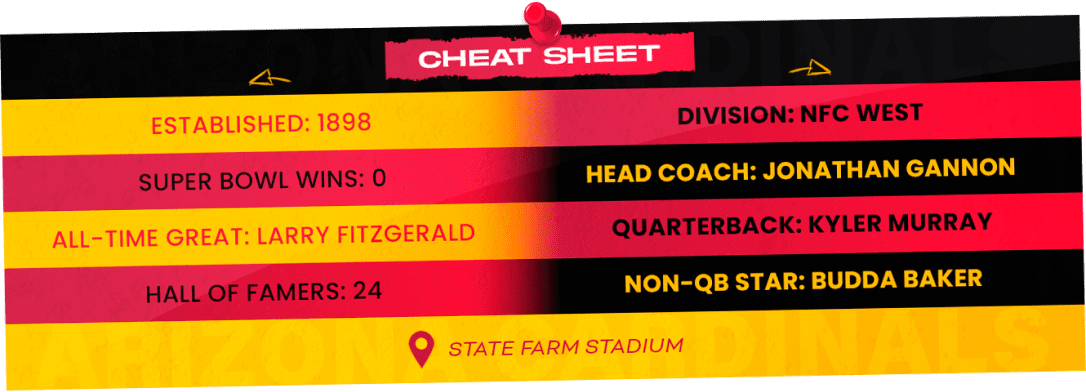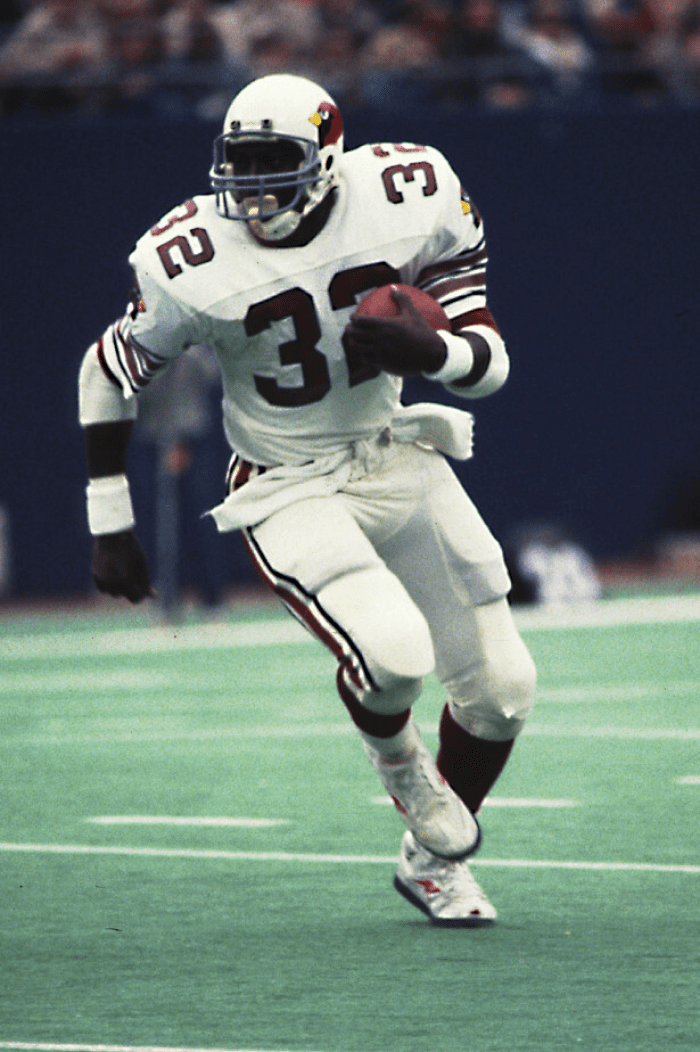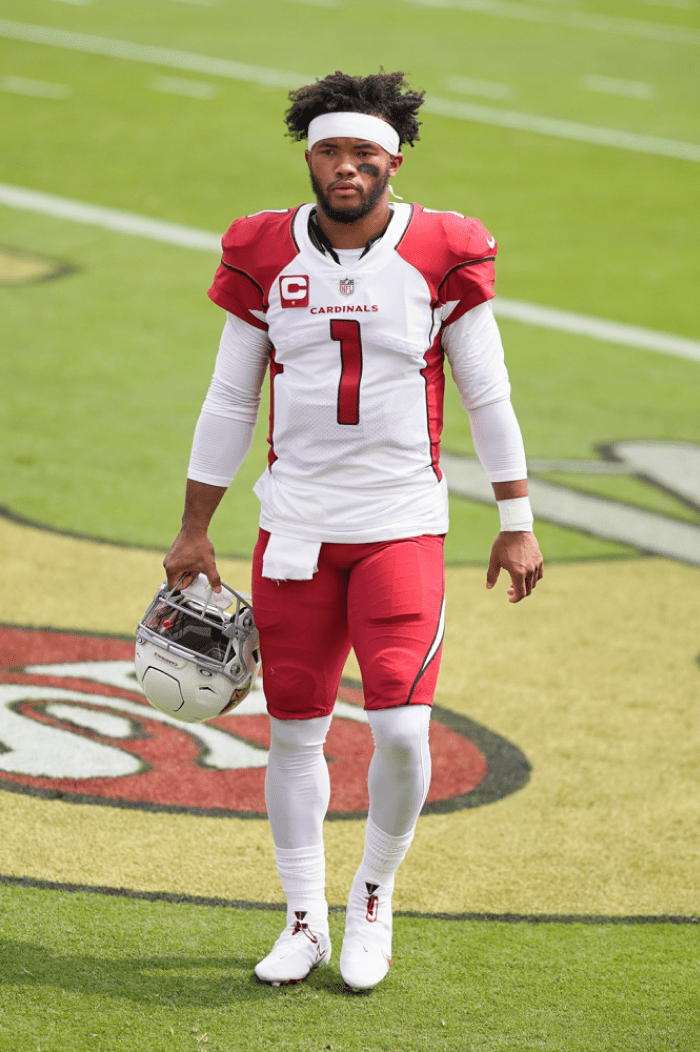
ONE
In 1898 the Arizona Cardinals franchise was founded as the Morgan Athletic Club in Chicago - making them not only the oldest franchise in the NFL, but the oldest continuously run professional football team in the United States. The team was later renamed the Racine Normals before becoming the Racine Cardinals.

Arizona Cardinals Logo
TWO
The team became a charter member of the American Professional Football Association (APFA), which was renamed the National Football League (NFL) in 1922. Playing as the Chicago Cardinals, the team won their first NFL Championship in 1925 - though the title was controversial due to a disputed game with the Pottsville Maroons, leading to ongoing debates about the legitimacy of the championship.

Chicago Cardinals Logo
THREE
In 1947, the Cardinals won their second NFL Championship - defeating the Philadelphia Eagles 28-21. This remains the franchise's last championship victory. A year later, they faced the Eagles again - however, the Eagles defense dominated the Cardinals offense and consequently claimed a 7-0 victory. For the remainder of their time in Chicago, the Cardinals did not make another postseason appearance.
FOUR
With rapidly declining viewership and extensive financial struggles - alongside one of the greatest cornerbacks to ever play the game, Dick “Night Train” Lane, leaving for Detroit - the franchise made the decision to relocate to St. Louis, Missouri in 1960. Despite the move, and future Hall of Fame tight end Jackie Smith, the St. Louis Cardinals continued to struggle for the next 13 years in St Louis, making just one appearance in the postseason.
FIVE
After a tough decade, the mid ’70s saw a stark improvement thanks to the leadership of head coach Don Coryell, as the Cardinals won back-to-back NFC East titles in 1974 and 1975. Led by notable players such as quarterback Jim Hart and running back Terry Metcalf, the team developed a reputation for offensive dominance. That said, their postseason struggles continued as they were unable to advance past the divisional round in the playoffs.

Don Coryell, Head Coach 1973-1977
SIX
Despite elite performances from 1979 Offensive Rookie of the Year Ottis Anderson, the Cardinals once again struggled to keep their head above water and so, in 1988, they moved to Phoenix, Arizona. The move was driven by the desire for a more modern stadium and better market opportunities - in the hope that the organisation could finally avoid struggling financially. After initially being called the Phoenix Cardinals, the team changed its name to the Arizona Cardinals in 1994 to better represent the entire state. While the move and rebranding may have addressed their issues off the field, on the field it was a different story.

Ottis Anderson, Running Back 1979-1986
SEVEN
The nineties and early noughties saw the Cardinals fail to produce on the field, with the team in desperate need of an injection of star power. After the signing of all-time rushing yards leader Emmitt Smith in 2003, was somewhat anticlimactic, Arizona struck gold when they drafted receiver Larry Fitzgerald in 2004. Nicknamed “sticky fingers” due to his incredible catching ability, Fitzgerald would become an 11x Pro Bowler and Cardinal legend. With a WR1 in place the Cardinals signed Pro Football Hall of Fame QB Kurt Warner in 2005 as they pushed for their first Super Bowl. Behind these two greats, the Cardinals found a way to Super Bowl XLIII - where they lost to the Pittsburgh Steelers, 27-23, thanks to an incredible catch from Steelers receiver Santonio Holmes.

Larry Fitzgerald, Wide Receiver 2004-2020
EIGHT
Arizona would make the playoffs again in 2009 but failed to replicate the postseason success they’d experienced in 2005 - losing to the eventual champions, the New Orleans Saints, in the Divisional round. In 2013, Bruce Arians was hired as the new head coach and almost immediately had the Cardinals back in contention. Although, in 2014, it was another early exit in the playoffs. In 2015, the Cardinals finished the regular season with a franchise-best 13-3 record and an appearance in the NFC Championship Game where they were defeated by the Carolina Panthers. 24 wins over the course of two seasons marked one of the most successful periods in the team's recent history.
NINE
Once again, Arizona began to struggle as they managed just 18 wins over the next three seasons. As a result, in an unprecedented move, the Cardinals selected their second top-10 QB in back-to-back drafts - drafting Kyler Murray with the first-overall pick in the 2019 NFL Draft. The risk immediately paid dividends, as Murray won Offensive Rookie of the Year - demonstrating his dual-threat capability under new head coach Kliff Kingsbury. In 2021, the Cardinals made the playoffs for the first time since 2015 but were eliminated in the Wild Card round by the Los Angeles Rams. Murray was showing huge promise during his first few years. However, since 2021, injuries and inconsistency have stopped Murray from taking the Cardinals back to the Super Bowl. Having arguably selected a general talent at wide receiver in Marvin Harrison Jr., during the 2024 NFL Draft, the Cardinals and Murray are ready to prove their doubters wrong this season.

Kyler Murray, Quarterback 2019-Present
BEFORE YOU GO
The team plays its home games at State Farm Stadium in Glendale, Arizona. The stadium, which opened in 2006, features a retractable roof and a retractable natural grass field - a unique design among NFL stadiums.

Pat Tillman, a former Cardinals safety, left his NFL career in 2002 to enlist in the U.S. Army following the September 11 attacks. He was tragically killed in Afghanistan in 2004. The Cardinals honour his legacy with the Pat Tillman Foundation and a statue outside State Farm Stadium.

According to Forbes, the Arizona Cardinals franchise is valued at $3.8 billion as of 2023.










